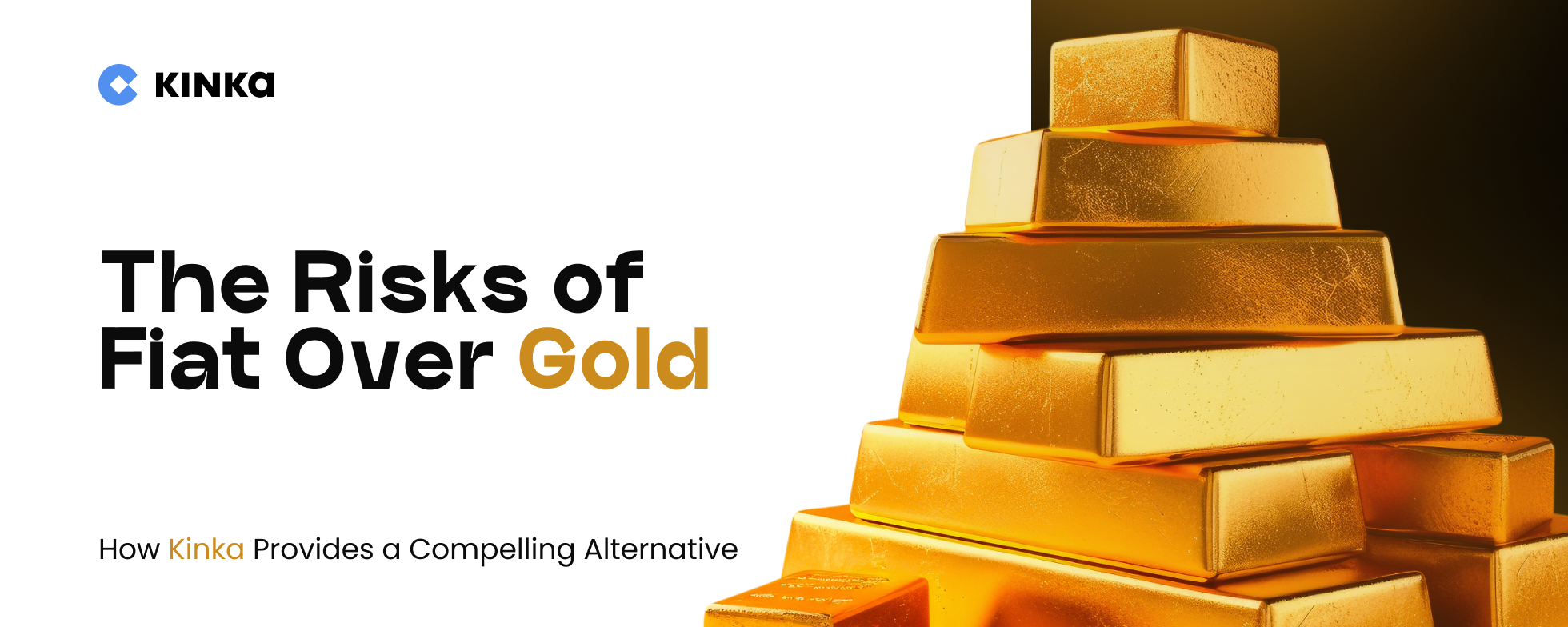It’s been over a century since gold has been used as the primary medium of exchange. You may think gold, therefore, must have precipitously collapsed in value. Quite the opposite.If you bought gold in 1921, it was worth $20. Today, it’s worth 100x that.
Since 2002, every major national currency has lost value against gold. The Russian ruble has lost an astonishing 95% of its value. The Swiss franc, a strong, stable, and secure currency, has lost 70%. It tells quite a tale.
In 2023, 44 and the world’s 46 national currencies fell against the value of gold. The majority of investors, including retail, just don’t trust fiat anymore. At least not as a safe reserve of value. For most, wealth can no longer be safely stored in cash.
Why Gold Remains Attractive
Almost all of the value which has accumulated in gold happened not because the gold became more desirable (although thanks to uses in new technology including smartphones, it is becoming increasingly so), but that national currencies – or fiat currencies – have become less desirable.
In the decade following the Nixon shock, gold became the most valuable it had ever been. That pattern is now traditionally established: gold is a natural hedge against hyperinflation. Twas ever thus, will ever be.
Hyperinflation is the curse of all economies. In the years since the Covid pandemic, inflation has skyrocketed in developed nations due to the frantic money printing and quantitative easing measures put in place by national treasuries.
The Recent Surge in in Desire for Gold
The asset boom of the last decade has been underpinned by cheap, affordable credit and, just like the time before, the train is shuddering to a halt unless governments keep patching economic holes with freshly minted liquidity. The US debt ceiling mounts and, no matter what policy decisions are taken over the next decade, money will continue to get cheaper. The cycle is set.
Therefore, assets like gold are enjoying new limelight. Crypto has amplified this trend. Digital assets are being increasingly validated by national regulations the world over. Ever more respectable institutions are looking for exposure to crypto assets on the back of Bitcoin’s status as ‘digital gold’.
Real gold – gold bars, ingots, ETFs and more – is being divested into aggressively by large financial institutions on the back of the realisation that fiat is the token which is destined to dropped, and safe, practical assets like gold are the best way to store wealth for themselves and for their clients.
Issues with Buying and Storing Gold
Gold though, is not as easy to buy as you think. Especially for a fair market price. In fact, it’s nearly impossible to get gold at face value unless you are buying both at quantity and through OTC trading desks.
There is always a mark up by the seller, because there is alway an associated cost to storing, shipping, minting, or otherwise distributing gold in any form. Yes, if you’re a broker at JPMorgan, you could probably buy gold ETFs that track the true value pretty closely, but for 99% of us, the associated fees are always there, especially buying physical gold.
And if you are buying physical gold, storage also becomes an issue. Storing gold in a home is risky. Storing it in a vault is expensive. And ‘storing’ your exposure to it through financial instrumentalisation comes with its own set of expense and risk, plus the fact that you never really have true ownership of the gold, just the instrument that represents it.
For all these reasons, gold ownership can be a slightly more fraught and inefficient endeavour for retail than it otherwise has to be. A fact that, sadly, depresses down on the price of gold. Most people would like to own a little gold, but the avenues to do so are not clean and clear.
This is true for retail, but it’s also true for those who are actively trading gold, finding that brokerage fees, storage and maintenance fees, and others are drastically reducing the margin on their profitable investments, or acting as a counterweight to the gains they are enjoying using gold as a stable, safe position for their cash.
A Compelling Alternative
This is where Kinka Gold provides a compelling alternative. In one simple transaction, anyone – from the smallest individual buyer to the largest institution – can have instant ownership of and exposure to gold.
$XNK is an ERC-20 token, designed to be pegged to the value of one troy ounce of gold. Each token is a Japanese brand that meets the Good Delivery Standards set by the London Bullion Market Association (LBMA), is backed by a Japanese brand designated by the Osaka Exchange (hereinafter referred to as “OSE”) with a purity of 99.99%.
OSE is a derivatives exchange licensed by the Japanese Financial Services Agency under the Financial Instruments and Exchange Act, and also operates a gold futures market.
Buying and storing gold on-chain has many advantages. It’s quick and easy to buy, and just as easy to transfer ownership of, making it suitable for use as a replacement stable currency that relies on gold for its underlying value.
Storing it in a crypto wallet is as secure as any other crypto, with the gold inheriting all the decentralised security of the Ethereum blockchain – the world’s second largest. On-chain gold restores the fungibility, transferability, and general use-case for gold, restoring its ancient utility in the modern era, while maintaining and reinforcing its place as a hedge over inflation.
With Kinka gold, fiat’s time in the sun may finally be coming to an end. There will always be a place for national backed currencies, of course, but the fact that Kinka makes the world’s oldest currency, gold, into a practical, easy to use, easily accessible and divisible unit that isn’t gatekept by institutions, means that – these days – there is, unlike fiat, virtually no risk owning it at all.








